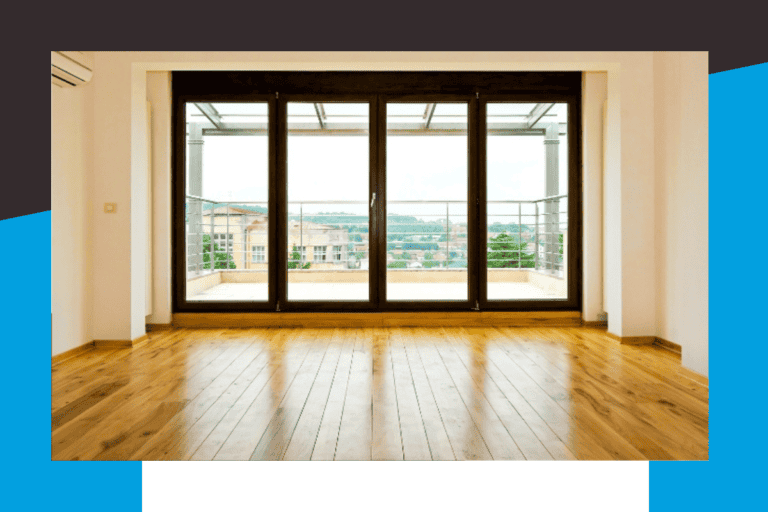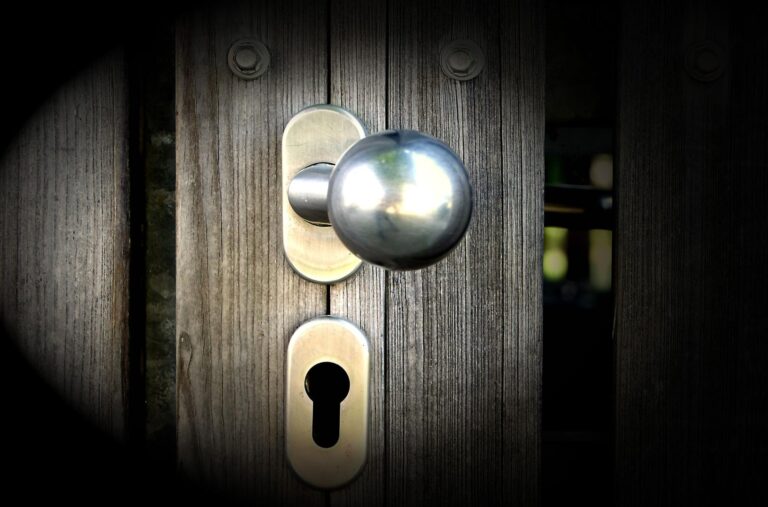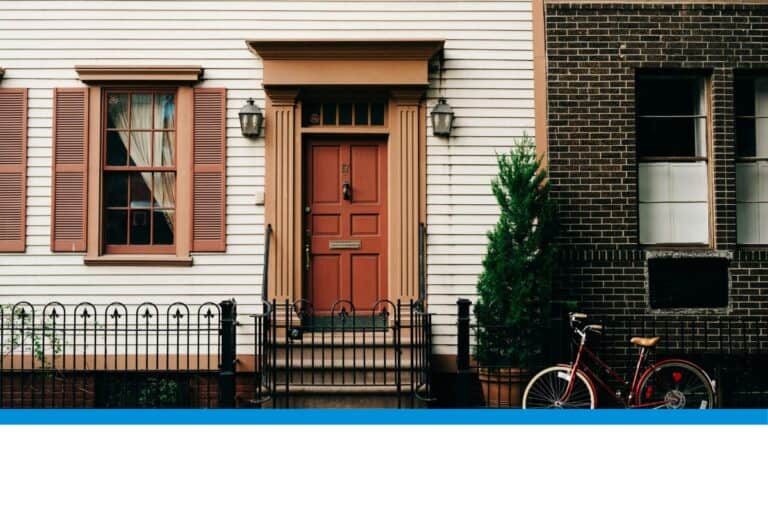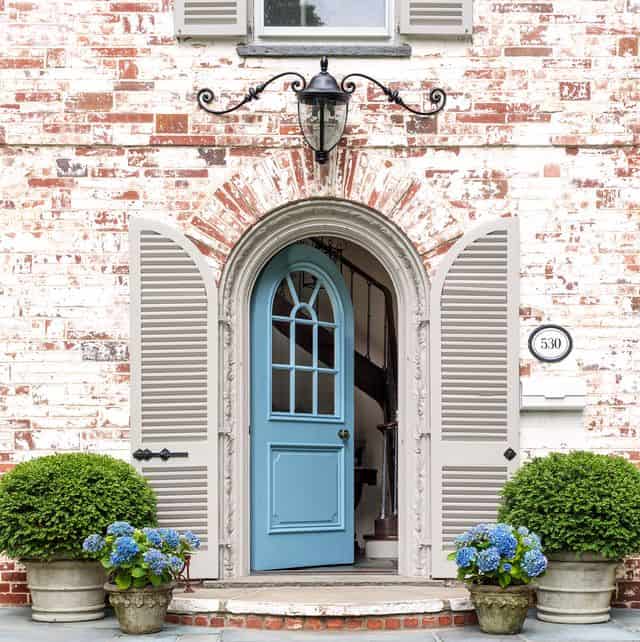Doors are more than just a functional part of your home—they’re your first line of defense, a design statement, and a key factor in energy efficiency.
But let’s be real. Most of us don’t think about maintaining our doors until they start causing trouble. Maybe it’s a squeaky hinge, a door that won’t close properly, or those pesky drafts sneaking through the gaps.
Here’s the good news: with just a few supplies and some basic know-how, you can keep your doors working like new. No need for expensive repairs or calling in professionals for every little issue.
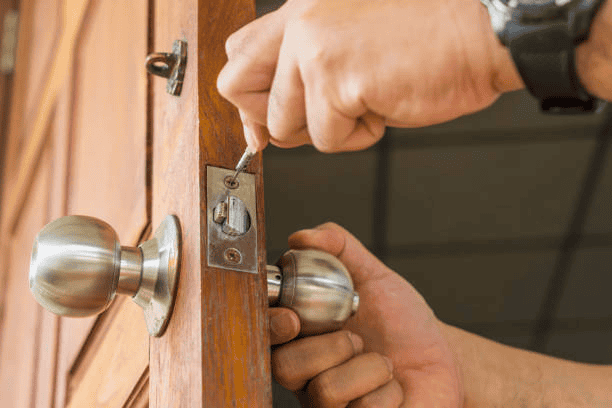
In this guide, we’ll walk you through everything you need to know about to DIY door maintenance. From quick fixes for sticking doors to step-by-step tips for weatherproofing your front door, we’ve got you covered.
By the end, you’ll be ready to handle common problems and keep your doors looking and functioning their best for years to come.
Why Door Maintenance Matters
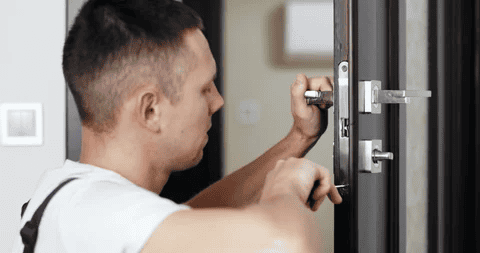
Your doors work hard every single day. They endure constant opening and closing, exposure to the elements, and the occasional accidental slam. Over time, this wear and tear can cause a variety of problems.
But regular maintenance can prevent many of these issues before they start. Here’s why it’s worth the effort:
- Smooth Operation: Nobody likes a door that creaks, grinds, or sticks. Proper care ensures your doors open and close effortlessly.
- Energy Efficiency: A well-sealed door keeps drafts out and maintains indoor temperatures. This helps lower your energy bills.
- Enhanced Security: Strong, functional locks and hinges are your first line of defense against intruders.
- Cost Savings: Catching small problems early—like worn weather seals or a misaligned latch mechanism—can save you from expensive repairs down the line.
- Aesthetic Appeal: Whether it’s a sleek modern design or a classic wooden door, proper upkeep keeps your home looking its best.
Ignoring maintenance might not seem like a big deal at first, but small issues like rust spots or loose screws can quickly snowball into major problems.
Routine Maintenance Checklist
Regular maintenance is the key to keeping your doors working smoothly and looking great. It doesn’t take much time, and a little effort now can save you from bigger headaches later. Here’s a simple checklist to follow:
1. Clean Your Doors
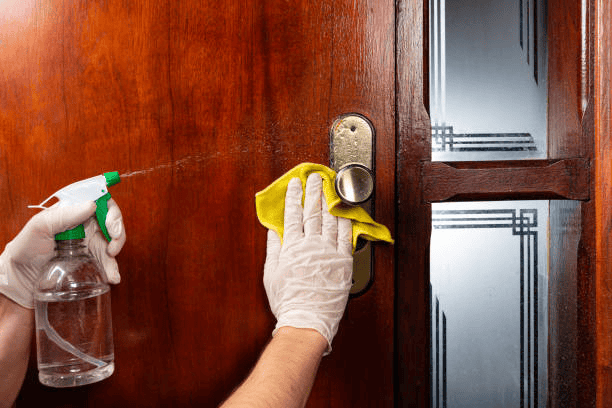
- How to Do It: Use a soft cloth and clean water to wipe away dirt and dust. For tougher grime, add a mild detergent.
- Why It Matters: Dirt buildup can damage finishes and make your doors look worn.
- Pro Tip: Avoid harsh cleaners on wooden doors—they can strip the finish. Instead, opt for wooden door maintenance products.
2. Inspect Hardware
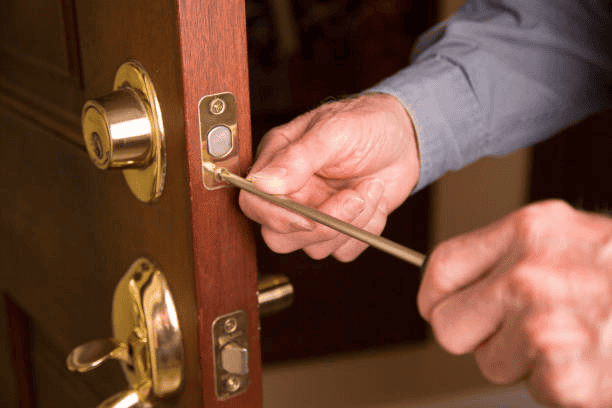
- What to Look For: Check hinges, screws, and door handles for signs of wear or loosening.
- How to Fix: Tighten loose screws with a screwdriver. Replace broken or bent hardware as needed.
- Why It Matters: Secure hardware ensures smooth operation and prevents doors from sagging.
3. Lubricate Moving Parts
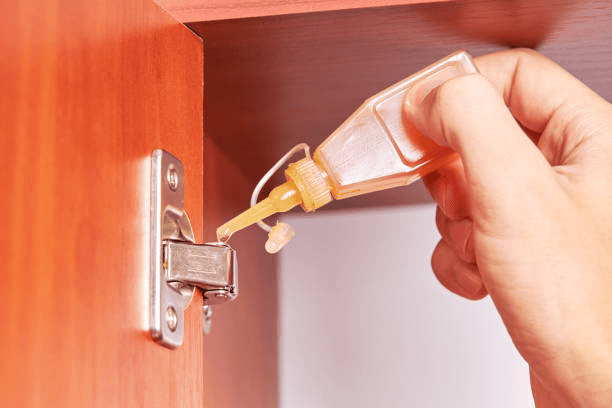
- How to Do It: Apply a silicone-based spray to hinges, rollers, and other moving parts.
- Why It Matters: Lubrication prevents grinding noises and reduces wear on components.
- Pro Tip: Avoid heavy oils—they attract dirt and can make things worse.
4. Replace Weatherstripping
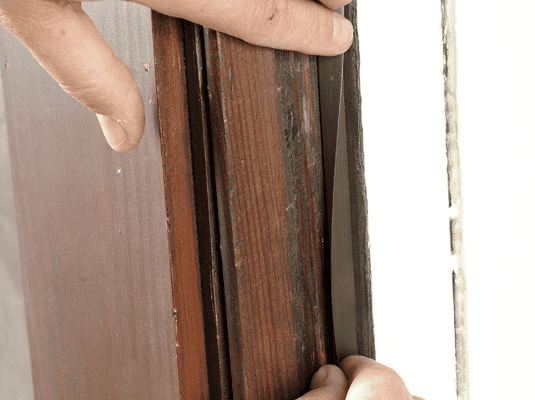
- What to Check: Look for cracks, gaps, or tears in the weather seal around your doors.
- How to Fix: Remove the damaged weatherstripping and replace it with new material.
- Why It Matters: Proper seals block drafts, improve energy efficiency, and keep out pests.
5. Test Door Alignment
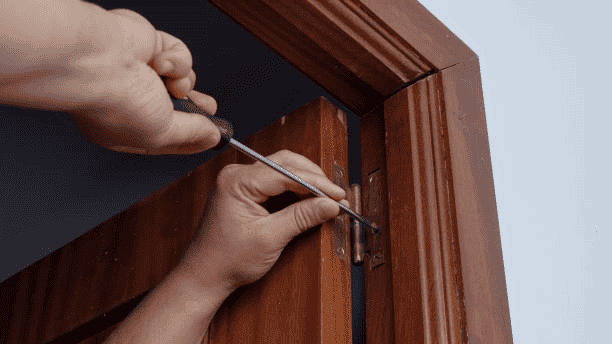
- How to Do It: Open and close the door a few times. Notice if it sticks, scrapes the floor, or feels misaligned.
- How to Fix: Adjust the hinges or sand down areas where the door sticks.
- Why It Matters: A well-aligned door operates smoothly and prevents unnecessary stress on the frame.
When to Do This
- Light cleaning: Weekly.
- Hardware checks: Monthly.
- Weatherstripping and lubrication: Every 6 months.
- Full inspection: Annually.
Fixing Common Door Problems
Even with regular maintenance, doors can develop issues over time. The good news? Most problems are easy to fix with a little DIY effort. Here’s how to tackle the most common problems.
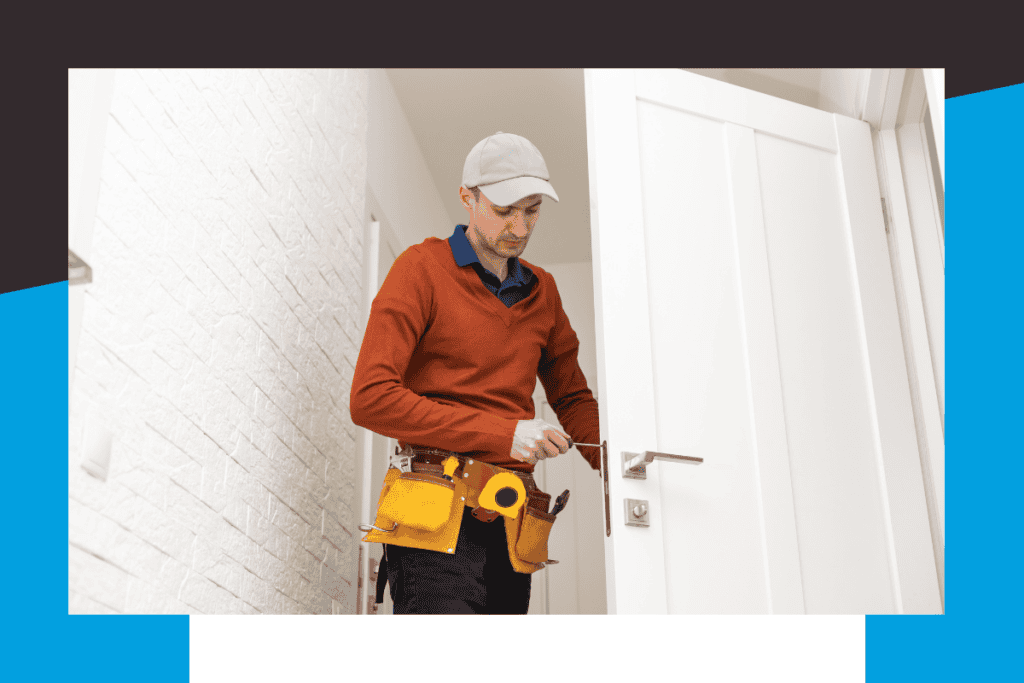
1. Squeaky Hinges
- Cause: Lack of lubrication or dirt buildup on hinge pins.
- How to Fix:
- Apply a silicone-based lubricant to the hinge.
- Open and close the door a few times to work the lubricant into the hinge.
- If the squeak persists, remove the hinge pin, wipe it clean, and apply lubrication before reinserting.
- Pro Tip: Use a small towel under the hinge to catch any drips.
2. Sticking Doors
- Cause: Humidity causing wood to swell or misaligned hinges.
- How to Fix:
- Tighten the hinge screws.
- Sand down the edge of the door where it sticks.
- Repaint or reseal the sanded area to protect it from moisture.
- Pro Tip: Test the door’s path before sanding to identify exactly where it’s sticking.
3. Sliding Doors Off Track
- Cause: Dirt buildup or misaligned rollers.
- How to Fix:
- Clean the door’s path and tracks with a vacuum or soft clothing.
- Adjust the rollers using the screws near the base of the door.
- Lift and realign the door back onto its track.
- Pro Tip: Regularly clean sliding door tracks to avoid future problems.
4. Misaligned Latch Mechanism
- Cause: The strike plate isn’t aligned with the door latch.
- How to Fix:
- Loosen the screws on the strike plate.
- Adjust its position slightly and retighten the screws.
- Test the door to ensure the latch clicks securely into place.
- Pro Tip: If the adjustment isn’t enough, use a metal file to slightly enlarge the latch hole.
5. Rust Spots on Metal Doors
- Cause: Exposure to moisture.
- How to Fix:
- Sand the rust spots until the surface is smooth.
- Apply a rust-inhibiting primer and repaint the area.
- Pro Tip: Use weather-resistant paint for long-lasting protection.
When to Seek Professional Help
If your door frame is broken, the lock mechanism is severely damaged, or you’re dealing with a garage door spring issue, it’s best to call in a pro. Some fixes require specialized tools or expertise to avoid further damage or safety risks.
Seasonal Maintenance Tips
Your doors face different challenges throughout the year, depending on the weather. From cold winters to humid summers, seasonal maintenance helps keep your doors in great condition no matter the season.
Winter Maintenance
- Check Weather Seals:
- Inspect the weather seal for tears, gaps, or wear.
- Replace worn-out weatherstripping to block cold drafts and improve your home’s energy efficiency.
- Lubricate Locks:
- Apply a lock-specific lubricant to prevent freezing in metal locks.
- Avoid water-based products, as they can worsen the problem.
- Test for Drafts:
- Light a candle near the door edges. If the flame flickers, you likely have a draft.
- Install a draft excluder or replace the door’s bottom seal to fix the issue.
Spring Maintenance
- Clean Sliding Door Tracks:
- Remove dirt buildup with a vacuum or a damp cloth.
- Lubricate the tracks to ensure smooth operation.
- Inspect Hinges and Screws:
- Tighten any loose screws and look for signs of rust or damage.
- Replace broken or bent screws to avoid bigger issues later.
- Repaint Wooden Doors:
- Apply a fresh coat of paint or stain to protect wooden doors from moisture as the weather warms up.
Summer Maintenance
- Prevent Door Swelling:
- Sand sticking doors caused by high humidity.
- Use a dehumidifier in overly damp areas to minimize swelling.
- Check for Warping:
- Inspect wooden doors for signs of warping or uneven edges.
- Replace damaged doors or reinforce them with proper sealing techniques.
- Clean Glass Doors:
- Use a streak-free cleaner for glass doors to keep them sparkling.
- Inspect for chips or cracks and repair them promptly.
Fall Maintenance
- Prepare for Cooler Weather:
- Replace old weather seals to prevent heat loss during the colder months ahead.
- Inspect the frame and fix any cracks or gaps that could let cold air in.
- Lubricate Moving Parts:
- Apply silicone-based lubricant to hinges, rollers, and latch mechanisms.
- This prevents grinding noises and keeps everything operating smoothly through the winter.
- Inspect for Rust:
- Check metal doors for rust spots and address them before they spread.
Seasonal Checklist
- Monthly: Clean tracks and surfaces, check weather seals.
- Every 6 Months: Lubricate hinges, locks, and other moving parts.
- Annually: Inspect for structural damage, repaint or reseal wooden doors.
Specialty Door Maintenance
Not all doors are the same, and different materials require different care routines. Whether you’re dealing with a beautiful wooden door, a sturdy metal door, or a sleek glass door, here’s how to keep them in top condition.
Wooden Doors
- Prevent Swelling:
- Use a dehumidifier in areas prone to high humidity.
- Sand down any swollen areas and reseal them with a waterproof finish.
- Apply a Protective Coat:
- Repaint or apply a fresh coat of varnish every 2–3 years to protect against moisture and sun damage.
- Use weather-resistant paint for external wooden doors.
- Inspect for Cracks:
- Check for cracks or splits in the wood, especially around joints.
- Fill cracks with wood filler, sand the area, and repaint for a seamless finish.
Metal Doors
- Combat Rust Spots:
- Sand rusted areas with fine-grit sandpaper until smooth.
- Apply a rust-inhibiting primer before repainting.
- Check Hinges and Locks:
- Lubricate metal hinges to prevent grinding noises.
- Inspect locks for dirt buildup and apply lock-specific lubricants as needed.
- Regular Cleaning:
- Wipe the door with a damp cloth and mild detergent to remove dirt and grime.
- Avoid abrasive cleaners that can damage the protective coating.
Glass Doors
- Keep Them Clean:
- Use a streak-free glass cleaner and a microfiber cloth to clean the surface.
- Avoid harsh chemicals that can scratch or damage the glass.
- Inspect for Chips or Cracks:
- Look for any signs of damage and address small chips with a glass repair kit.
- Replace cracked panels promptly to avoid further breakage.
- Check the Tracks:
- For sliding glass doors, vacuum dirt and debris from the tracks regularly.
- Apply a silicone-based lubricant to ensure smooth operation.
Quick Pro Tips
- Wooden doors need extra attention in areas with high humidity or extreme weather changes.
- Metal doors are durable but prone to rust if not properly painted and sealed.
- Glass doors should be inspected regularly to avoid accidents from unnoticed cracks.
Comparison Table: Care Requirements by Door Type
| Door Type | Primary Maintenance Tasks | Challenges | Pro Tip |
| Wooden Doors | Clean, seal, and repair cracks. | Warping, cracking, moisture. | Use dehumidifiers to prevent swelling. |
| Metal Doors | Sand rust spots, repaint, lubricate hinges. | Rust, dents. | Use rust-inhibiting primer before repainting. |
| Glass Doors | Clean with streak-free cleaner, inspect seals. | Chips, cracked seals. | Repair chips early to avoid costly replacements. |
| Sliding Doors | Clean tracks, lubricate, replace rollers if needed. | Dirt buildup, misalignment. | Clean tracks monthly for smooth operation. |
Affordable Tools for DIY Door Repairs
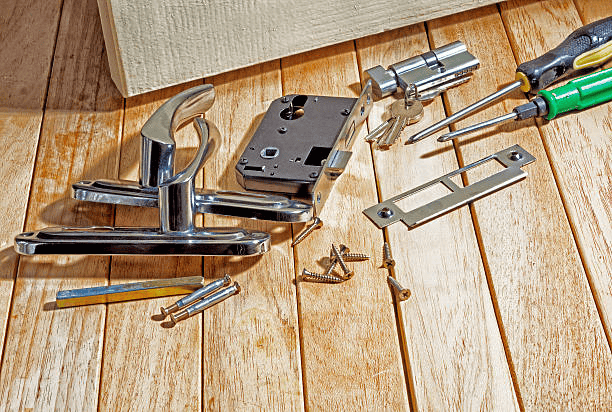
You don’t need an expensive toolkit to maintain and repair your doors. With a few basic tools and supplies, you’ll be ready to tackle most door issues with ease. Here’s what you’ll need:
Essential Tools
- Screwdriver Set:
- Tighten loose screws on hinges, handles, and strike plates.
- Look for a multi-bit set to handle different screw types.
- Silicone-Based Lubricant:
- Keeps hinges, tracks, and other moving parts operating smoothly.
- Prevents dirt buildup and grinding noises.
- Sandpaper:
- Smooth out sticking edges on wooden doors.
- Fine-grit sandpaper works best for small adjustments.
- Soft Cloth and Mild Detergent:
- Perfect for cleaning door surfaces without damaging the finish.
- Use microfiber cloths for streak-free cleaning on glass doors.
- Weatherstripping Replacement Kits:
- Replace worn seals to block drafts and improve energy efficiency.
- Look for adhesive-backed options for easy application.
Optional Tools for Advanced Repairs
- Wood Filler:
- Fill cracks or holes in wooden doors before repainting.
- Rust-Inhibiting Primer:
- Essential for repairing rust spots on metal doors.
- Door Alignment Shims:
- Fix misaligned doors by adjusting hinge placement.
- Glass Repair Kit:
- Patch up small chips in glass doors to prevent them from spreading.
Cost-Saving Tip: You don’t need to buy everything at once. Start with the basics and add tools as needed. Many of these items are available at hardware stores or online for under $20 each.
How to Organize Your Tools
- Keep your tools in a small toolbox or storage bin for easy access.
- Label each item so you can quickly grab what you need for specific tasks.
When to Call for Professional Help
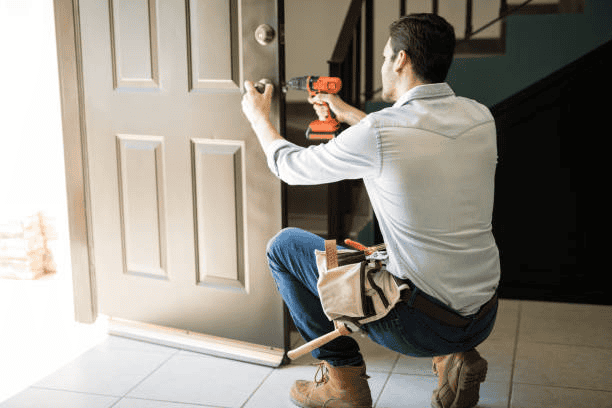
While most door maintenance and repairs can be handled with a bit of DIY effort, there are times when it’s best to bring in a pro. Attempting certain fixes without the right tools or expertise can lead to more damage—or even pose safety risks. Here’s when to step back and call for professional:
1. Broken Door Frames
- Signs You Need Help:
- Large cracks or splits in the frame.
- Structural damage from impact or wear over time.
- Why It’s Best Left to a Pro:
- Frames require precise alignment and reinforcement. A poorly repaired frame can cause further issues with the door’s operation.
2. Complex Lock or Latch Mechanism Issues
- Signs You Need Help:
- Locks that jam or don’t engage properly.
- High-security or electronic locks malfunctioning.
- Why It’s Best Left to a Pro:
- Locksmiths have specialized tools and knowledge to repair or replace lock systems without damaging the door.
3. Garage Door Repairs
- Signs You Need Help:
- Broken springs, grinding noises, or a door that won’t open or close properly.
- Why It’s Best Left to a Pro:
- Garage door mechanisms involve high-tension springs that can be dangerous to handle without proper equipment and training.
4. Warped or Severely Damaged Doors
- Signs You Need Help:
- Doors that no longer fit in their frames due to severe warping.
- Deep cracks, holes, or broken panels in wooden or metal doors.
- Why It’s Best Left to a Pro:
- Professionals can determine whether the door can be salvaged or if it needs replacement.
5. Automatic or Sliding Door Systems
- Signs You Need Help:
- Automatic doors not responding to controls.
- Sliding doors that come off their tracks repeatedly despite cleaning and alignment.
- Why It’s Best Left to a Pro:
- Electrical systems and specialized rollers often require professional tools and expertise.
Finding the Right Professional
- Ask for Referrals: Friends and family can recommend reliable door repair specialists.
- Check Reviews: Look for highly-rated professionals online.
- Ask Questions: Ensure they have experience with your specific door type or issue.
Knowing when to call a professional can save you time, money, and frustration in the long run.
Estimated Costs for Professional Door Repairs
While prices can vary based on location and door type, here’s a rough breakdown of what to expect:
| Repair Type | Estimated Cost |
| Replacing a Door Frame | $150–$400 |
| Installing or Repairing a Lock | $50–$200 |
| Garage Door Spring Replacement | $100–$300 |
| Automatic Door System Repair | $200–$600 |
| Fixing Structural Door Damage | $250–$500 |
| Sliding Door Roller Replacement | $75–$150 |
When DIY Door Maintenance Isn’t Enough
If your door requires specialized tools, advanced techniques, or poses safety risks (like garage door spring repairs), calling a professional is the safest and most cost-effective choice.
While DIY repairs are empowering and budget-friendly, there’s no shame in knowing when to call in the experts.
Preventative Measures for Long-Term Door Health
The best way to avoid costly door repairs is through consistent preventative care. By catching small issues early and maintaining a regular routine, you’ll ensure your doors remain functional, secure, and attractive for years to come.
Seasonal Maintenance Tasks
Every season brings different challenges for your doors. Here’s what you can do to stay ahead of potential problems:
| Spring: Refresh and Repair | Summer: Combat Humidity | Fall: Prepare for Cold Weather | Winter: Protect Against the Elements |
|---|---|---|---|
| Clean sliding door tracks to remove dirt and debris. Inspect wooden doors for warping or swelling from winter moisture. Apply a fresh coat of paint or sealant to protect against upcoming summer heat. | Check for swelling in wooden doors and sand down sticking areas if necessary. Use dehumidifiers in high-humidity areas to reduce moisture absorption. Inspect and lubricate hinges and locks to prevent grinding noises. | Replace worn weatherstripping to block drafts and keep your home warm. Inspect exterior door seals and frames for cracks or gaps. Add a door sweep to prevent heat loss from gaps at the bottom of doors. | Lubricate locks to prevent freezing. Test door alignment and fix any loose screws. Check for drafts and use temporary draft stoppers if needed. |
Benefits of Consistent Care
- Energy Efficiency: Properly sealed doors can reduce energy loss by up to 15%, saving you money on heating and cooling costs.
- Longevity: Regular maintenance can extend the life of your doors by years, avoiding costly replacements.
- Enhanced Security: Functional locks and sturdy doors mean better protection for your home.
Example: One homeowner replaced their weatherstripping annually and saved an estimated $200 on heating bills over three years. Small efforts add up!
Conclusion
Your doors are more than just entryways—they’re essential to your home’s security, energy efficiency, and aesthetic appeal. By taking the time to maintain and repair them, you can avoid costly issues, extend their lifespan, and keep them operating smoothly year-round.
Here’s a quick recap of what we’ve covered:
- Routine Maintenance Practices: Regular cleaning, lubricating, and weatherproofing can prevent most door problems.
- Common Repairs Made Easy: From fixing squeaky hinges to addressing sticking doors, DIY solutions save time and money.
- Specialized Care: Wooden, metal, glass, and sliding doors each have unique needs that are easy to manage with the right approach.
- Knowing When to Call a Pro: Structural damage, advanced lock issues, or complex systems often require expert attention.
- Preventative Measures: Seasonal checkups and proactive care help you catch issues early and maintain your doors’ functionality and appearance.


